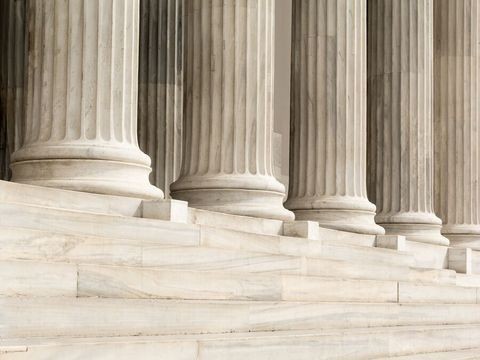FCC Publishes Telecommunications Supply Chain Security Rule
Client Alert | 2 min read | 01.21.21
On January 13, 2021, the Federal Communications Commission (FCC) published a final rule that requires advanced communications providers to review their equipment and services within their networks and either: (1) certify that they do not include any covered equipment; or (2) file an annual report with the FCC that identifies covered communications equipment or services (as described below), details information about the equipment/service and their removal or replacement plan, and justifies the use of the equipment/service, among other things. Government contractors that have to make a representation under Section 889(a)(1)(B) of the FY2019 NDAA are challenged if they operate in rural locations where there may not be providers that do not use covered equipment or services. This rule may ultimately alleviate that issue for contractors by requiring and providing funding for removal and replacement of covered equipment and services. The new rule, which implements the Secure and Trusted Communications Networks Act of 2019, is effective March 15, 2021, with limited exceptions for the required reporting and parts of the rule’s removal, replacement, disposal, and reimbursement requirements.
The rule establishes processes and procedures for the creation of a list of covered communications equipment and services determined to be a risk to national security (“Covered List”). The FCC’s Public Safety and Homeland Security Bureau will include equipment and services on the Covered List, which is subject to modification, that (1) are produced or provided by any entity if the equipment or services pose an unacceptable risk to U.S. national security or U.S. persons, as specifically determined by certain agencies or departments; and (2) are capable of routing or redirecting user data traffic or permitting visibility into any user data or packets that the equipment or services transmit or handle, causing advanced communications service providers’ networks to be disrupted remotely, or otherwise posing an unacceptable risk to U.S. national security or U.S. persons.
The rule also:
- Directs the FCC to develop a list of categories of suggested replacements for equipment and services included on the Covered List;
- Establishes the Secure and Trusted Communications Networks Reimbursement Program for those providers of advanced communications services with two million or fewer customers. Participants in the program must meet certain criteria and certify, among other things, that they have established a plan for the permanent removal and replacement of any covered communications equipment or services. The rule includes penalties for those reimbursement recipients who violate the Secure and Trusted Communications Networks Act of 2019. These penalties include reimbursing the government, barring from the reimbursement program, referral to criminal or civil law enforcement agencies, and barring from other FCC programs.
- FCC subsidies may not be used for the purchase or maintenance of covered equipment and services.
- Directs recipients of Universal Service Fund support to “rip and replace” covered equipment and services prior to receiving a funding commitment or support, unless they are participating in the reimbursement program.
Contacts

Partner, Crowell Global Advisors Senior Director
- Washington, D.C.
- D | +1.202.624.2698
- Washington, D.C. (CGA)
- D | +1 202.624.2500
Insights
Client Alert | 5 min read | 12.12.25
Eleventh Circuit Hears Argument on False Claims Act Qui Tam Constitutionality
On the morning of December 12, 2025, the Eleventh Circuit heard argument in United States ex rel. Zafirov v. Florida Medical Associates, LLC, et al., No. 24-13581 (11th Cir. 2025). This case concerns the constitutionality of the False Claims Act (FCA) qui tam provisions and a groundbreaking September 2024 opinion in which the United States District Court for the Middle District of Florida held that the FCA’s qui tam provisions were unconstitutional under Article II. See United States ex rel. Zafirov v. Fla. Med. Assocs., LLC, 751 F. Supp. 3d 1293 (M.D. Fla. 2024). That decision, penned by District Judge Kathryn Kimball Mizelle, was the first success story for a legal theory that has been gaining steam ever since Justices Thomas, Barrett, and Kavanaugh indicated they would be willing to consider arguments about the constitutionality of the qui tam provisions in U.S. ex rel. Polansky v. Exec. Health Res., 599 U.S. 419 (2023). In her opinion, Judge Mizelle held (1) qui tam relators are officers of the U.S. who must be appointed under the Appointments Clause; and (2) historical practice treating qui tam and similar relators as less than “officers” for constitutional purposes was not enough to save the qui tam provisions from the fundamental Article II infirmity the court identified. That ruling was appealed and, after full briefing, including by the government and a bevy of amici, the litigants stepped up to the plate this morning for oral argument.
Client Alert | 8 min read | 12.11.25
Director Squires Revamps the Workings of the U.S. Patent Office
Client Alert | 8 min read | 12.10.25
Creativity You Can Use: CJEU Clarifies Copyright for Applied Art
Client Alert | 4 min read | 12.10.25
Federal Court Strikes Down Interior Order Suspending Wind Energy Development





